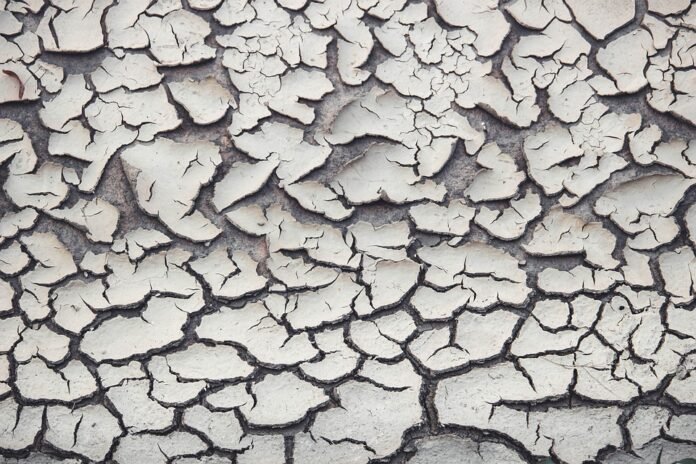The heat is getting a lot of “heat” these days from concerned activists, politicians, academics and the public.
And while it’s easy for the narrative to be all doom and gloom, Arizona State University’s David Sailor is helping tell the story of how Arizona and other Southwestern states will evolve in the coming years.
Sailor, director of the School of Geographical Sciences and Urban Planning and the Southwest Urban Integrated Field Laboratory, or SW-IFLSW-IFL is led by Arizona State University and based in the School of Geographical Sciences and Urban Planning. The laboratory’s teams include researchers from the University of Arizona, Northern Arizona University, Oak Ridge National Laboratory, Brookhaven National Laboratory and IBM., is an internationally renowned heat expert who is leading a team of more than 100 researchers on how to mitigate heat impacts in the future.
ASU News spoke to Sailor about his work with SW-IFL, the drivers of extreme heat and how the laboratory is guiding policymakers as they explore the range of potential solutions to these rapidly evolving environmental changes.
Editor’s note: Answers have been edited for length and/or clarity.
Question: What should Arizona residents and people who live in the Southwestern region of the United States prepare for in the coming years/decades when it comes to extreme heat?
Answer: Cities like Phoenix are warming due to two main reasons: large-scale climate change and local population growth and development. I think both of these drivers are going to continue to warm the region for some time. That warming is likely going to be larger at night than in the daytime. So, while we routinely see summer daytime high temperatures in the 110–115 F range and nighttime lows in the low- to mid-90s, I think we will soon start to see an occasional nighttime low of 100F. This warming will interact with increasing demand for energy and water.
Wildfires may also become more common and larger. This will intensify concerns around the joint effects of extreme heat and poor air quality. When these stresses are combined, they also put our utility infrastructure at risk. So I do think that the risk of a “heat disaster” — where large urban populations are simultaneously exposed to deadly heat and power outages — is a real concern that we need to plan for.
But, on a positive note … there are levers we can pull, so to speak, to improve the local climates experienced by Arizona residents and greatly reduce the risks posed by our warming climate. This is really why the SW-IFL exists — to spur action and help guide policymakers as they explore the range of potential solutions.
Q: Tell us more about the Southwest Urban Integrated Field Laboratory and its mission.
A: The Southwest Urban Integrated Field Laboratory is one of four urban laboratories funded by the U.S. Department of Energy; the others are in southeast Texas, Chicago and Baltimore. We each study our urban environments through different lenses and focus on different environmental concerns. For us, that focus is heat across the state of Arizona.
The SW-IFL builds on decades of pioneering urban climate research at ASU, but it’s a close collaboration among the three large public universities in Arizona, two national labs and a number of industry and government partners. In a nutshell, its mission is to empower communities across Arizona to respond to extreme heat and related environmental concerns through improving our understanding of the drivers of extreme heat as well as the ways in which different types of solutions impact the various societal and economic consequences of extreme heat.
Q: What have you learned about extreme heat in the last three years since SW-IFL was established?
A: First, I’d say we’ve learned a lot about just how variable extreme heat can be from one neighborhood to the next, and even within a single neighborhood. We’ve also learned that most of our solutions strategies are complicated, often offering fairly localized cooling, usually accompanied by unanticipated consequences of some sort that must be weighed against the cooling benefits.
Also, because of our transdisciplinary science approach, it’s become clear that there are many valid perspectives on what parameters are important when thinking about heat in cities. First, in terms of the basic definition of what we are studying, some researchers tend to focus on outdoor air temperatures, while others focus on surface temperatures or on the mean radiant environment experienced by pedestrians in outdoor settings. It’s also important to explore interactions between the outdoor environment and what I refer to as the “indoor urban climate” — after all, we spend nearly 90% of our lives indoors, so we can’t ignore these indoor spaces and their vulnerability to heat.
Q: What in your opinion is one of the most significant achievements of SW-IFL thus far?
A: There are actually two achievements I’d like to highlight. First, I think we’ve made major advances in team science. … Our SW-IFL is leading a cross-IFL effort focused on strengthening transdisciplinary team science knowledge and practices. Our goal here is to improve how large transdisciplinary projects like SW-IFL function so they can be more efficient and more effective.
On the science side, we’ve established an incredible resource of urban environment observations from our intensive field measurement campaigns over the past three summers. The resulting data have given us great insight into the drivers of extreme heat.
We have learned that urban air temperatures vary substantially even within individual neighborhoods. We have also learned that some solutions tend to provide cooling during the day but warming at night while other solutions provide cooling at night but warming during the day. Most importantly, we’ve demonstrated that very local-scale decisions around land cover and materials can have important benefits locally and downwind.






